The Revox B77 control unit can use the SC10429 chip with a substitution logic PCB, or a newer version using a ROM chip. As a ROM, a chip of the N82S123N type with a capacity of 32x8 bits is used. If this chip fails, there is a problem of finding a clean chip (or replacement, for example, IM5610CPE), as well as a programmer for it. The contents of this chip were found on the revoxforum.ch forum:
2D 2D 8C 0D 3D 3D 9C 1D 89 0D E7 6D 99 1D F7 7D
2D 2D 8C 0D 2D 2D 9C 1D 89 0D 6D 6D 99 1D 6D 6D
But such ROM chips have not been used for a long time, so it is very difficult to find them, as well as a suitable programmer. Therefore, I decided to go the other way - I made a ROM emulator on a microcontroller. When the state of the input pins changes, an interrupt occurs, and the necessary output pins levels are set in the handler. After that, the microcontroller goes into sleep mode (Power Down), when the clock generator stops. This eliminates interference on the analog path of the tape recorder. To make it look nice, I took a microcontroller in a very small package - ATtiny2313-20MU (QFN package). As a result, the dimensions of the board turned out to be the same as those of the DIP-16 chip. The layout of the board is made one-sided for its manufacture by hand. By upgrading the firmware of the microcontroller, you can get additional functions of the control unit. For example, a version with "Pause" mode latching has been implemented (file B77_rom_pause_lock.hex). The board is very small, so there was not enough space for a programming connector. Instead, there are special points on the board where you can solder the programming connector with wires and then remove it.
2D 2D 8C 0D 3D 3D 9C 1D 89 0D E7 6D 99 1D F7 7D
2D 2D 8C 0D 2D 2D 9C 1D 89 0D 6D 6D 99 1D 6D 6D
But such ROM chips have not been used for a long time, so it is very difficult to find them, as well as a suitable programmer. Therefore, I decided to go the other way - I made a ROM emulator on a microcontroller. When the state of the input pins changes, an interrupt occurs, and the necessary output pins levels are set in the handler. After that, the microcontroller goes into sleep mode (Power Down), when the clock generator stops. This eliminates interference on the analog path of the tape recorder. To make it look nice, I took a microcontroller in a very small package - ATtiny2313-20MU (QFN package). As a result, the dimensions of the board turned out to be the same as those of the DIP-16 chip. The layout of the board is made one-sided for its manufacture by hand. By upgrading the firmware of the microcontroller, you can get additional functions of the control unit. For example, a version with "Pause" mode latching has been implemented (file B77_rom_pause_lock.hex). The board is very small, so there was not enough space for a programming connector. Instead, there are special points on the board where you can solder the programming connector with wires and then remove it.
Attachments
-
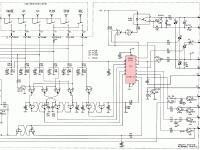 b77_sch.gif73 KB · Views: 408
b77_sch.gif73 KB · Views: 408 -
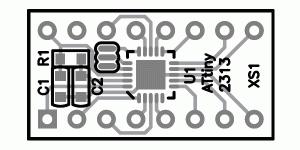 b77_brd.gif17.6 KB · Views: 332
b77_brd.gif17.6 KB · Views: 332 -
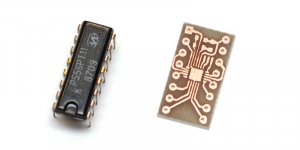 b77_brd1.jpg31.9 KB · Views: 296
b77_brd1.jpg31.9 KB · Views: 296 -
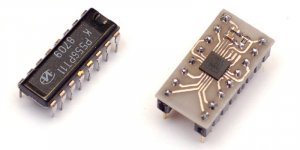 b77_brd2.jpg42.9 KB · Views: 294
b77_brd2.jpg42.9 KB · Views: 294 -
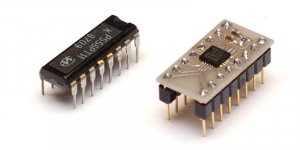 b77_brd3.jpg38.4 KB · Views: 283
b77_brd3.jpg38.4 KB · Views: 283 -
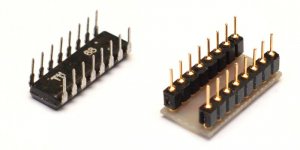 b77_brd4.jpg40.3 KB · Views: 318
b77_brd4.jpg40.3 KB · Views: 318 -
b77_rom_sch.pdf32 KB · Views: 185
-
b77_rom_pcb.pdf13.9 KB · Views: 147
-
hex_source.zip49.7 KB · Views: 172
-
B77_pcb_iron.pdf9.5 KB · Views: 185
My Revox B77 capstan speed control board failed so I bought a used board, the latest version, on Ebay. Turned out this board used all aluminum electrolytics so I replaced them all. After I did that and couldn't find any mistakes, I put it in and it worked. While I had the machine apart, I also replaced the two-pin electrical power plug with a modern three pin plug off an old computer power supply.